Wondering how to spend 2 weeks in Argentina? If you’re working out what to do in Argentina, then this itinerary will help you hit the highlights and get the most out of your visit.
Argentina is huge and far too big to squeeze into two weeks – try as you might. But you can still make a good dent in the 8th largest country in the world if you plan it right.
This two weeks in Argentina itinerary will have you weaving around the country, and by the end of your trip you’ll have seen incredible architecture, eaten delectable food and hiked through some of the world’s most beautiful landscapes.
If you’re lucky to have more than two weeks in Argentina, I’ve included some bonus locations to add to your Argentina itinerary, so feel free to mix and match to suit your tastes and interests. (I’ve also got more Argentina itinerary ideas for 1-4 weeks in the country.)
I love, love, love Argentina and was lucky enough to live there for two years. During my time there, I travelled the country extensively so these are my personal recommendations of the best places to visit in Argentina if this is your first time here.
You can also download this itinerary so you can print it and start planning your own Argentina trip! Just click here to grab your PDF copy.
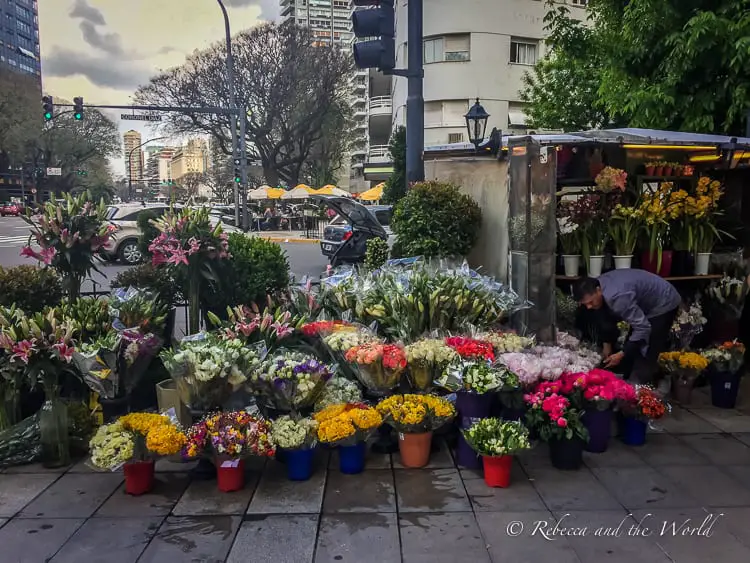
This blog post may contain affiliate links, meaning if you book or buy something through one of these links, I may earn a small commission (at no extra cost to you).
Your 2 weeks in Argentina itinerary
I’ll say it again: Argentina is huge. You’re not going to see everything in two weeks. This Argentina 2 week itinerary hits the highlights – my favourite parts of the country – but it is a tight itinerary and there’s not a lot of time in here for resting. But, as they say, you can sleep when you’re dead!
Here’s an overview of what this two weeks in Argentina itinerary covers:
- 3 days – Buenos Aires, the stunning capital of the country
- 5 days – hiking mountains and trekking on glaciers in Patagonia
- 2 days – wandering around the raging waters of Iguazú Falls
- 4 days – the otherworldly north of Argentina
If you want to slow this down and not feel so rushed, then alter this Argentina in 2 weeks itinerary to take off the north of the country (Salta and Jujuy) or the Patagonia portion and stay a few extra days in one of the other cities mentioned. Or you could cut out Iguazú Falls to save some extra flying time.
If you’ve only got 10 days in Argentina, then spend 3-4 days in Buenos Aires and 5-7 days in either Patagonia or the north of Argentina.
Once you’ve read through this post, feel free to drop me a line in the comments below or send me an email if you have questions about crafting the perfect Argentina trip – I’m happy to help!
Let’s get into my ultimate Argentina 14-day itinerary!
Map of Argentina itinerary
Days 1-3: Buenos Aires
The seductive capital of the country and the most European of all the cities in South America, it’ll be hard to drag yourself away from Buenos Aires. Buenos Aires alone is one of the reasons why you should visit Argentina.
Start your Argentina trip here for three days exploring stunning architecture, eating juicy steak, drinking full-bodied wines and watching an intimate tango show.
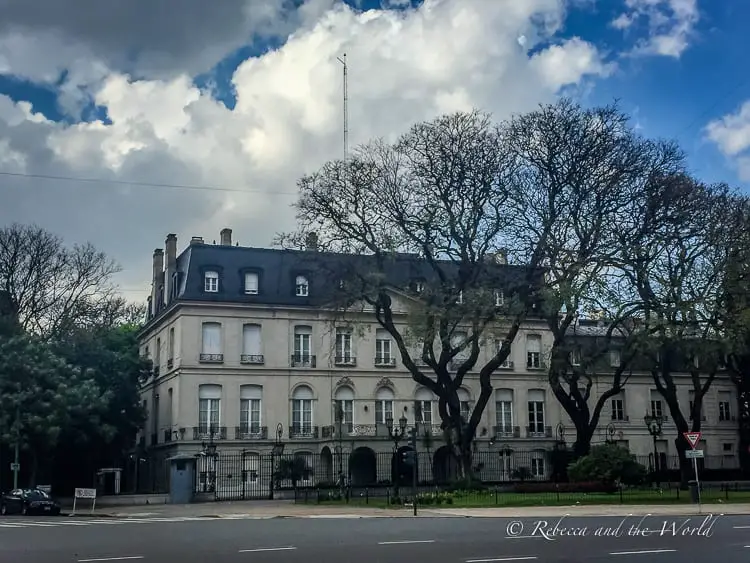
What to do in Buenos Aires
For a day-by-day Bueno Aires itinerary, follow my guide to 3 days in Buenos Aires.
The architecture in Buenos Aires is dazzling, and just walking along the streets will make you gasp in delight. The Recoleta Cemetery is a must – if a little creepy wandering around tombs. Head inside historical buildings like Palacio Barolo, Teatro Colón and El Ateneo Grand Splendid. Consider booking a walking tour so you can squeeze in all the key sites.
Buenos Aires’ love of art and culture is on display in many of its museums, including the Museo Nacional de Bellas Artes and the Museo de Arte Latinoamericano de Buenos Aires.
Step back in time in the antique shops that line San Telmo’s cobblestoned streets. Every Sunday the entire neighbourhood comes alive with a huge street market. Plan your 2 weeks in Argentina so that you have a Sunday in Buenos Aires just so you can experience this market.
Eating will be a highlight of your visit to Buenos Aires – and indeed across the entire country, especially if you’re a fan of steak. The city is filled with restaurants for all budgets as well as many secret bars.
To learn about the culture of Argentina, sign up with The Argentine Experience, a fun food tour where you’ll learn all about food in Argentina – you’ll certainly be more comfortable about ordering food in restaurants for the rest of your 2 weeks in Argentina.
Or take a parrilla tour or pizza tour. You can even take a cooking class to learn how to make empanadas and dulce de leche – some must-eats when in Argentina.
End the night with a tango show. I recommend Bar Sur for its intimate setting. The lavish Faena Hotel has a raunchy Rojo Tango performance – and the hotel itself is worth checking out for its eccentric design.
If you’re interested in having a custom leather jacket made, stop in at one of the many tailors in Buenos Aires (check out my guide to the best shopping in Buenos Aires). Do this at the start of your trip, as a leather jacket can usually be turned around in 24-48 hours.
Top tip: make sure you look down when you’re walking around the city. Porteños (people who live in Buenos Aires) aren’t good at picking up after their dogs, and you don’t want to step in any poop!
Where to stay in Buenos Aires
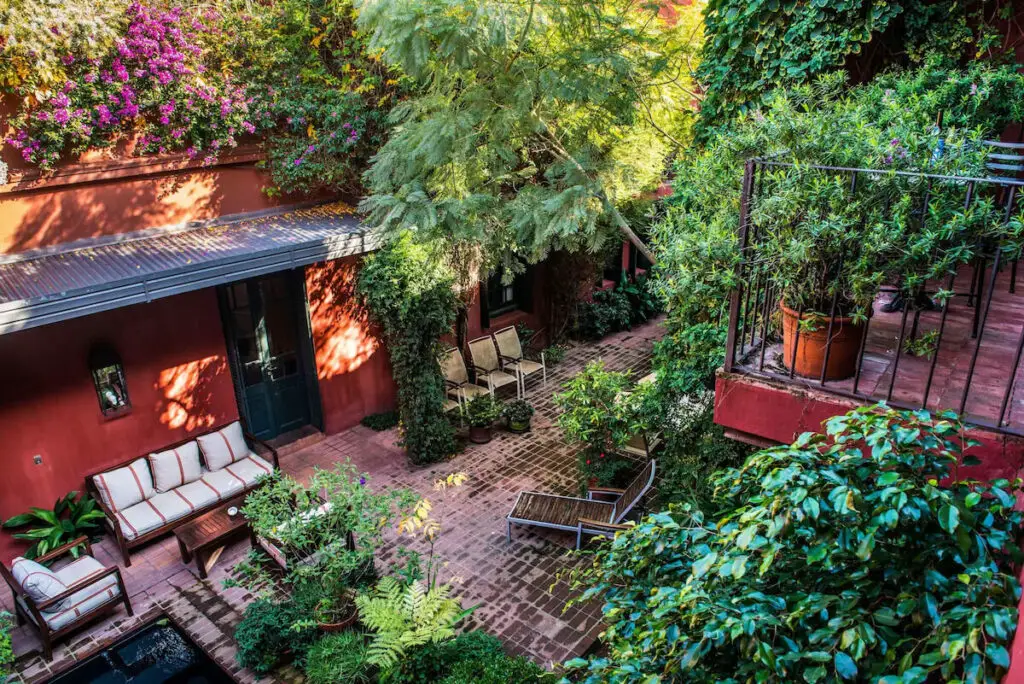
Luxury: (⭐ 9.0) BE Jardin Escondido by Coppola was once Francis Ford Coppola’s house and is now a cozy boutique hotel in the trendy Palermo neighbourhood.
Mid-range: (⭐ 8.7) The rooms at Hotel Club Frances, in the heart of Recoleta, are spacious and some have a sauna and spa bath.
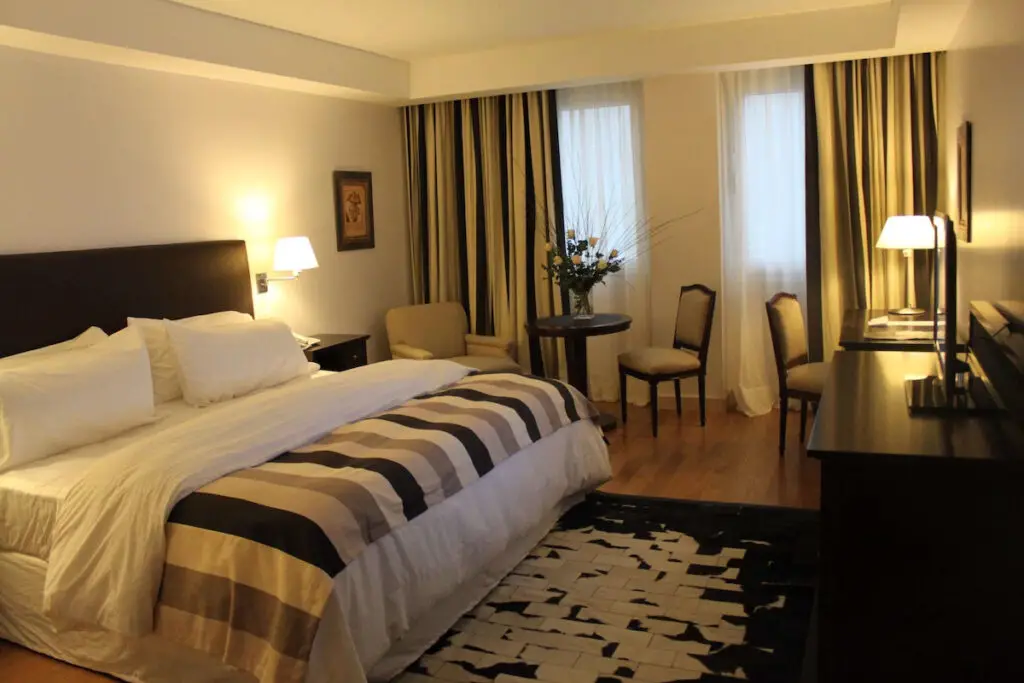
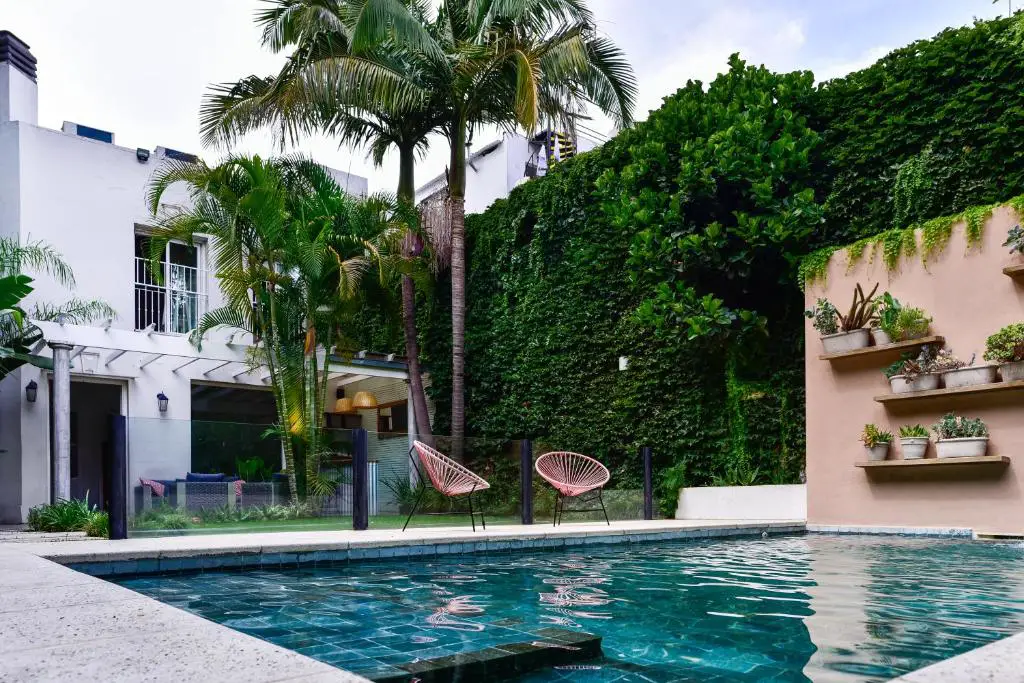
Budget: (⭐ 9.7) Casa Caravan has to be one of the cooler hostels I’ve seen, with a gorgeous garden, swimming pool, bar, clean rooms and comfy beds.
Looking for more things to do in Buenos Aires? Check out these other posts I’ve written about the city:
Days 4-8: El Calafate and El Chaltén
For many people, Patagonia is right at the top of their bucket list. It is, of course, one of the most incredible things to do in Argentina.
In El Calafate you can walk on a thousands-of-years-old glacier – truly an amazing experience.
Adventure lovers will be in their element in El Chaltén with so many options to hike in pristine parks. These two towns will give you a taste of Patagonia’s wildlife and beauty.
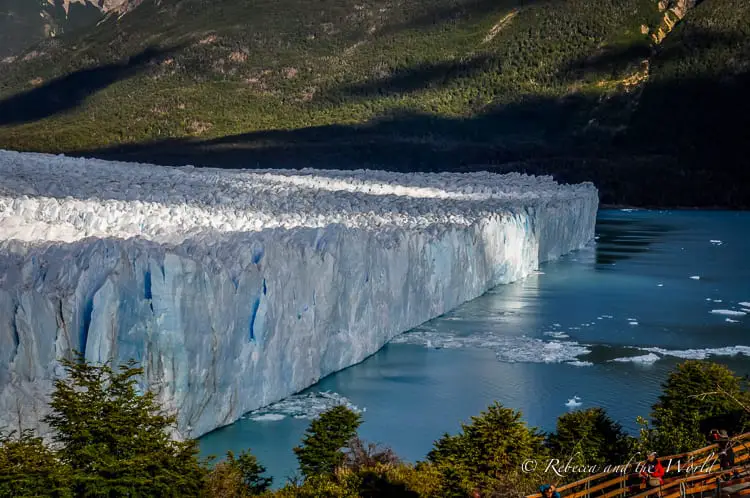
What to do in El Calafate and El Chaltén
You can fly from Buenos Aires direct to El Calafate. You can also take a bus, but with only 2 weeks in Argentina, flying will get you everywhere faster.
El Calafate is popular as the jumping-off point for Perito Moreno Glacier, located in Los Glaciares National Park.
Book a trek across the ice, take a boat tour or simply view the glacier from the series of boardwalks built around the park. Hearing the glacier calve – its thunderous crack and the boom as the ice hits the freezing waters below – is a sight and sound you’ll never forget.
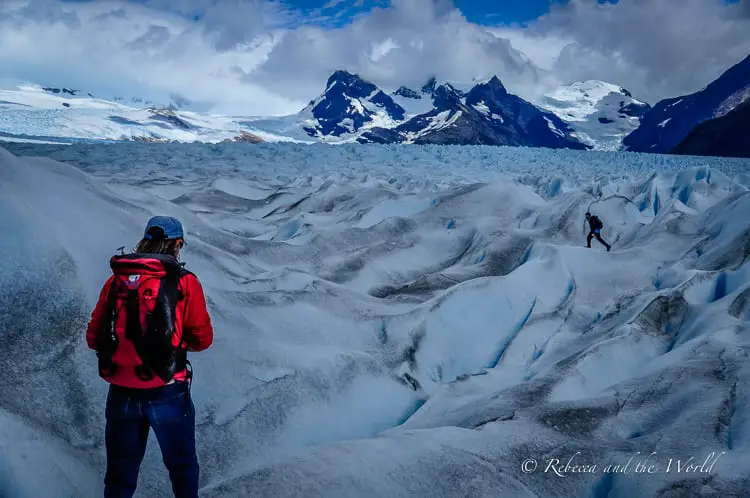
After you’ve explored the glacier, check out the town of El Calafate itself. Rug up for a visit to the bar de hielo (ice bar) in the Glaciarium or spot flamingos on Lago Argentina, the country’s largest freshwater lake.
After a day or two in El Calafate, take a bus for the two-hour journey to El Chaltén to hike one of the many trails around Monte Fitz Roy and Cerro Torre. Foggy weather can mean it’s difficult to see the peaks of these mountains, but on a clear day the views are spectacular.
I’ve got a guide to a handful of the best hikes in El Chaltén.
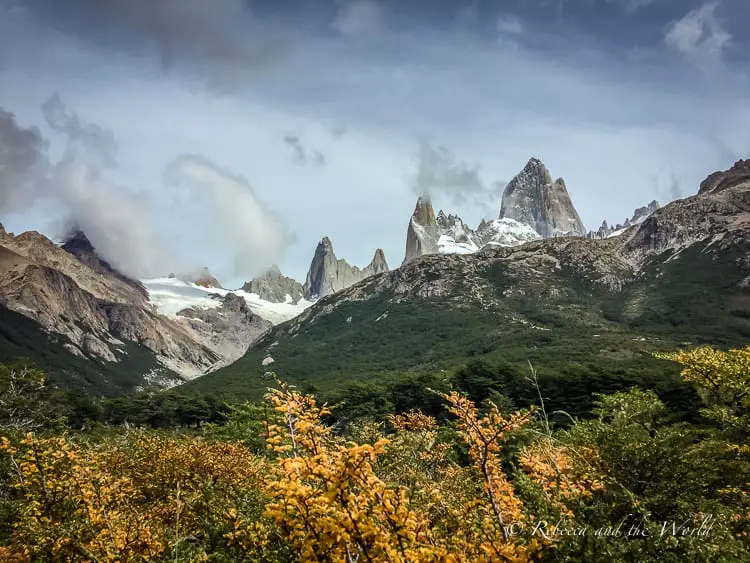
Despite its small size, there’s plenty to keep you occupied in El Chaltén beyond hiking. You can go mountain biking, rafting, kayaking, horseback riding or rock climbing.
After all that exertion, you’ll be thankful to know that the town has a thriving craft beer scene. Wander the main street of town (it’s not a long street!) and pop in at each pub, followed by a hearty snack of empanadas.
Where to stay in El Calafate
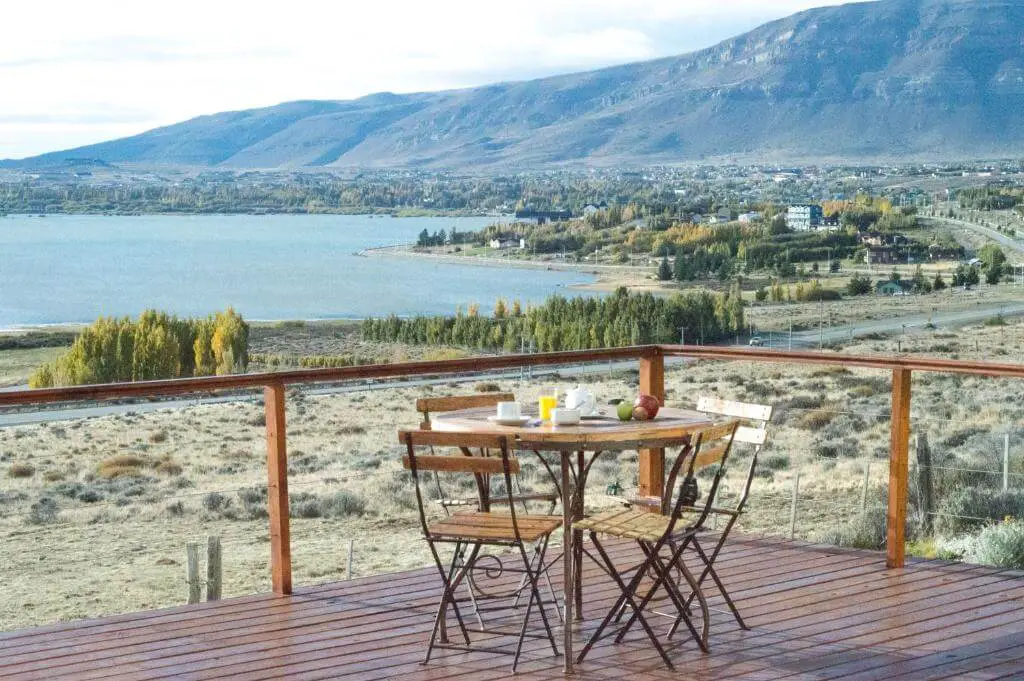
Mid-range: (⭐ 8.9) I recommend booking the stunning Hostería La Estepa, which has sweeping views over Lago Argentina. We stayed here on our trip and it was wonderful.
Budget: (⭐ 9.0) America del Sur Hostel is ideally located near downtown. The timber cabin-style hostel also has beautiful views.
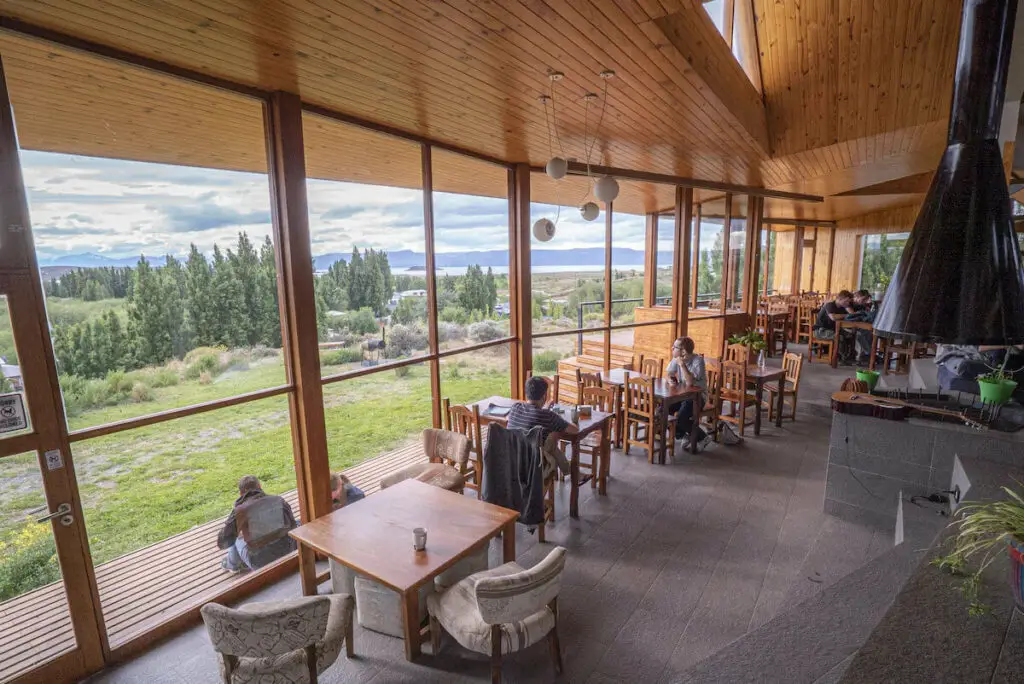
Where to stay in El Chaltén
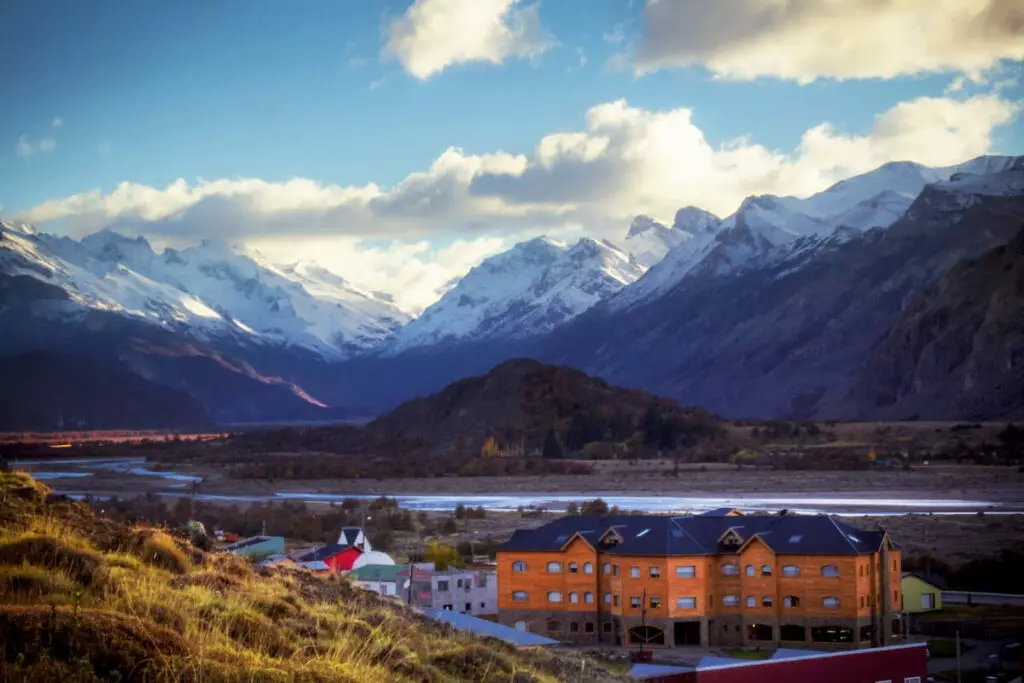
Mid-range: (⭐ 9.0) To beat the morning hiking crowds, book a room at Destino Sur Hotel de Montaña & Spa, which is located close to the trails.
Mid-range: (⭐ 9.0) The spacious, padded dome tents at Patagonia Eco Domes have amazing views of the surrounding mountains. There’s no mobile phone coverage or internet, and each dome is powered by solar energy.
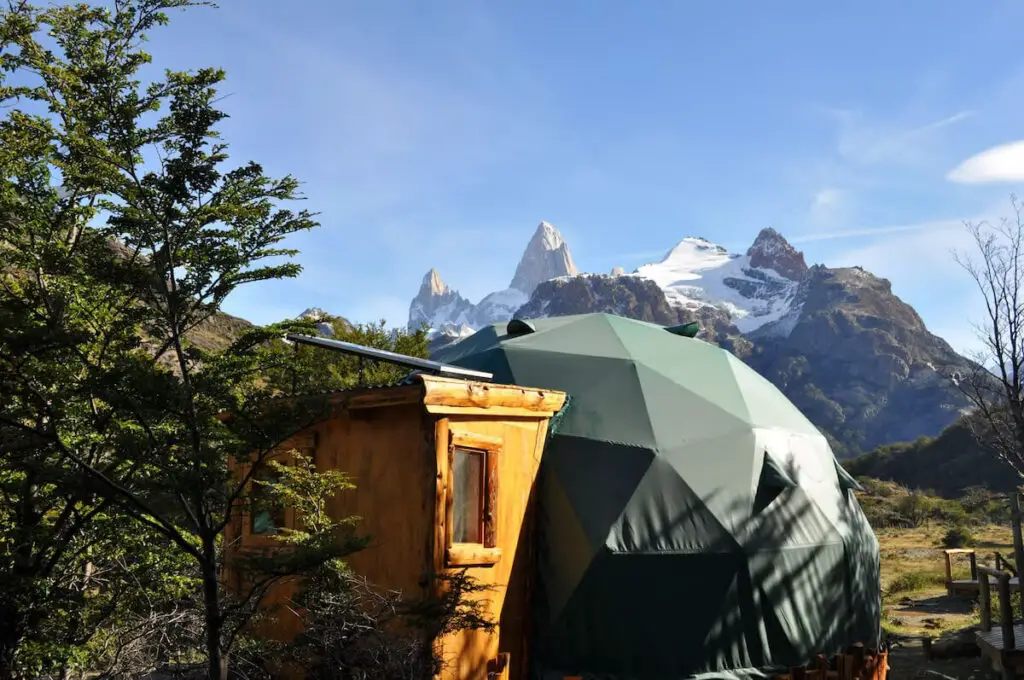
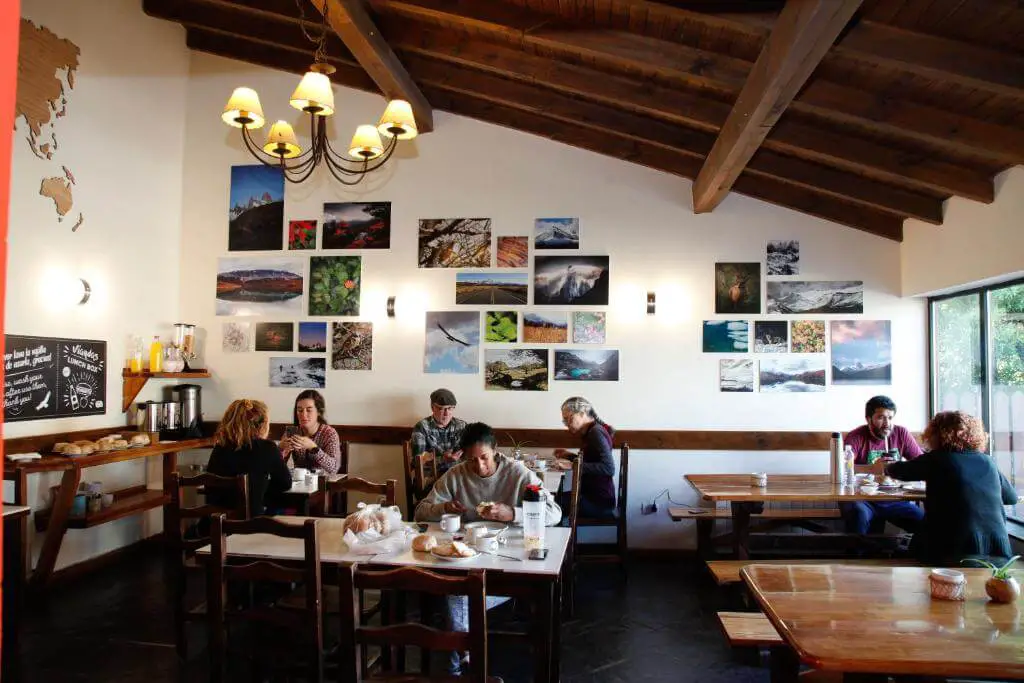
Budget: (⭐ 8.3) You’ll find competitive rates at Condor de los Andes. There’s a mix of shared dorms and private rooms, and breakfast is included in the rates.
Days 9-10: Iguazú Falls
Imagine three kilometres of waterfalls, some up to 80 metres high, some you can get right underneath, another one a wild, gushing spiral that’s so powerful you can’t see the bottom. That’s Iguazú Falls – the largest waterfall system in the world.
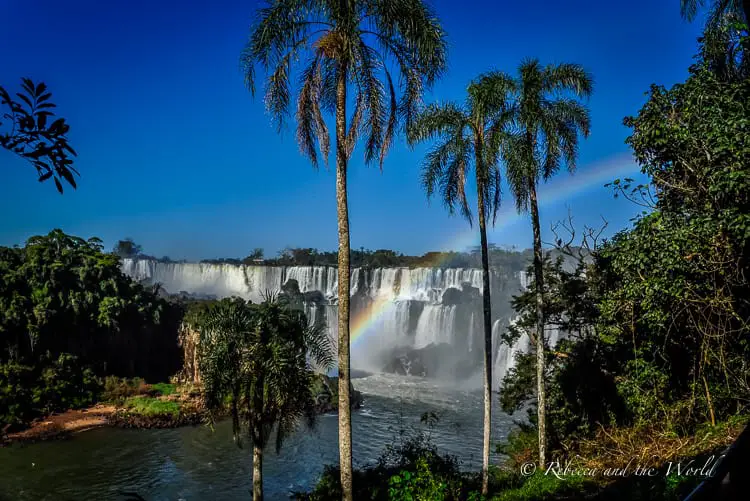
What to do in Iguazú Falls
Catch an early morning flight from El Calafate to Puerto Iguazú; you’ll most likely need to connect in Buenos Aires.
When you arrive in the afternoon, head straight out to the Argentine side of Iguazú Falls. There’s a series of well-maintained catwalks that get you up close to the thunderous waterfalls. You can do it yourself or book a guided tour that includes a boat ride that zips right under the waterfalls – it’s wild fun and you will get drenched! It’s definitely something you’ll remember from your 2 weeks in Argentina!
If you’ve arranged your visa for Brazil (if needed), you can cross the border the next day to see the waterfalls from the Brazilian side. Like in Argentina, boardwalks crisscross through and around the waterfalls and in some parts prepare to get wet as you cross underneath one of the powerful waterfalls. You can arrange a pick up from Puerto Iguazu to the Brazil side of the waterfalls.
If you don’t have a visa for Brazil, then one full day in Puerto Iguazú is enough. I actually think the Argentina side of Iguazú Falls is more spectacular, so don’t feel too bad if you don’t have time to skip across the border. You can read my guide to visiting Iguazú Falls where I compare the two sides.
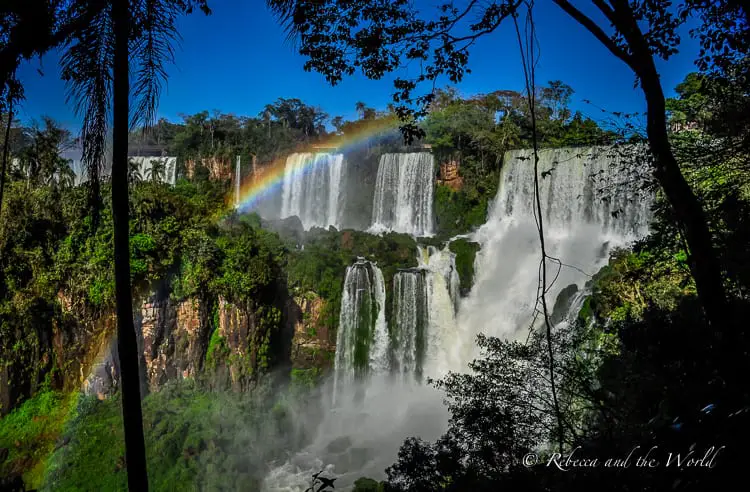
Where to stay in Iguazú Falls
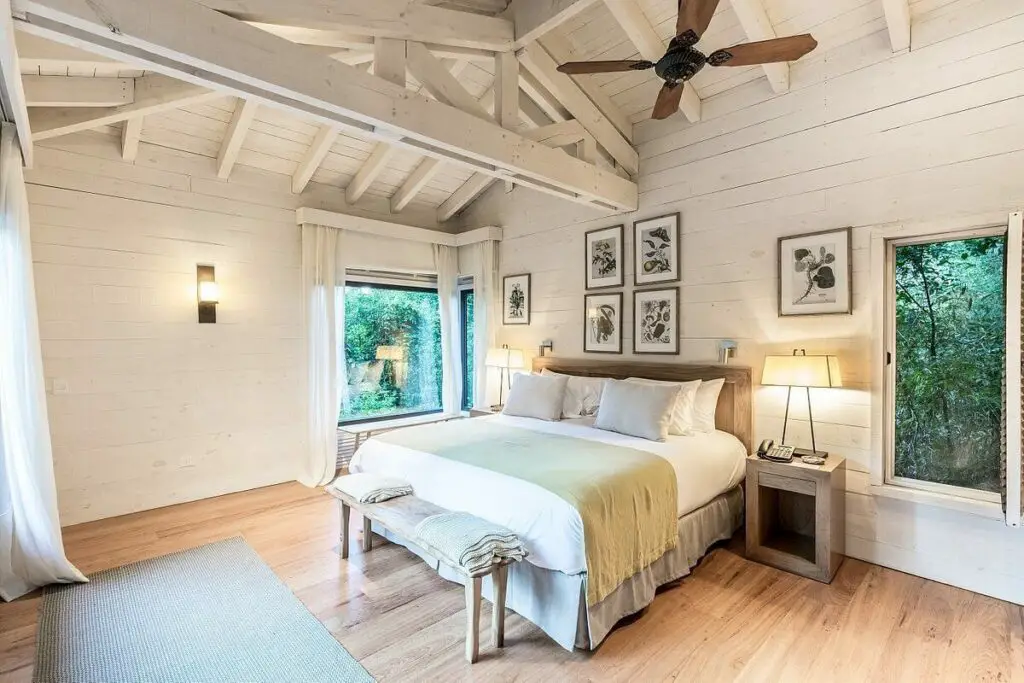
Luxury: If you’ve got cash to burn and like understated luxury, then book a villa at Awasi Iguazú. Villas are located deep in the rainforest and have private decks and plunge pools.
Mid-range: (⭐ 9.0) If you want to be located only a stone’s throw from the falls, then choose Gran Melia Iguazú. This is where my husband and I stayed when we visited Iguazú Falls.
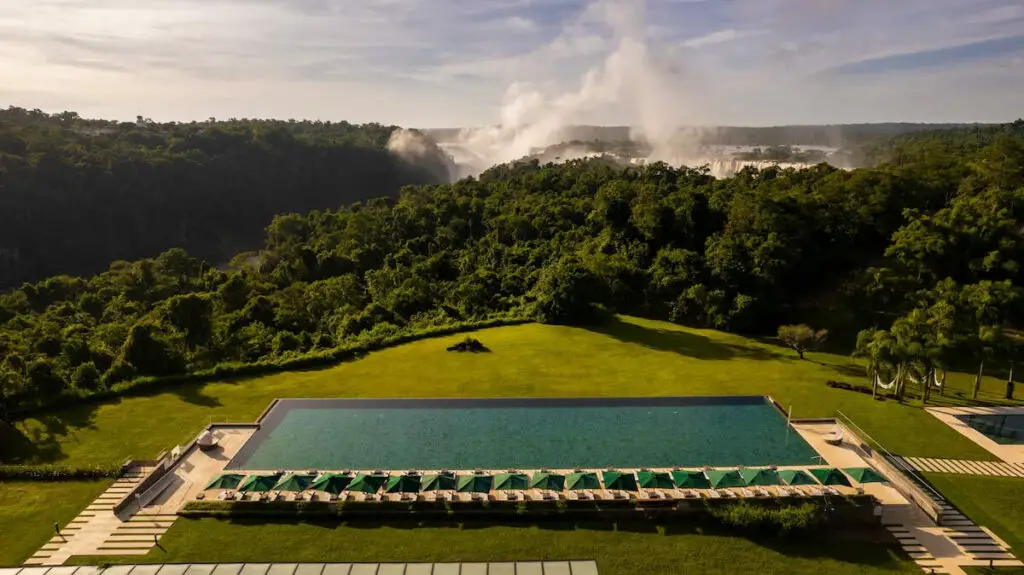
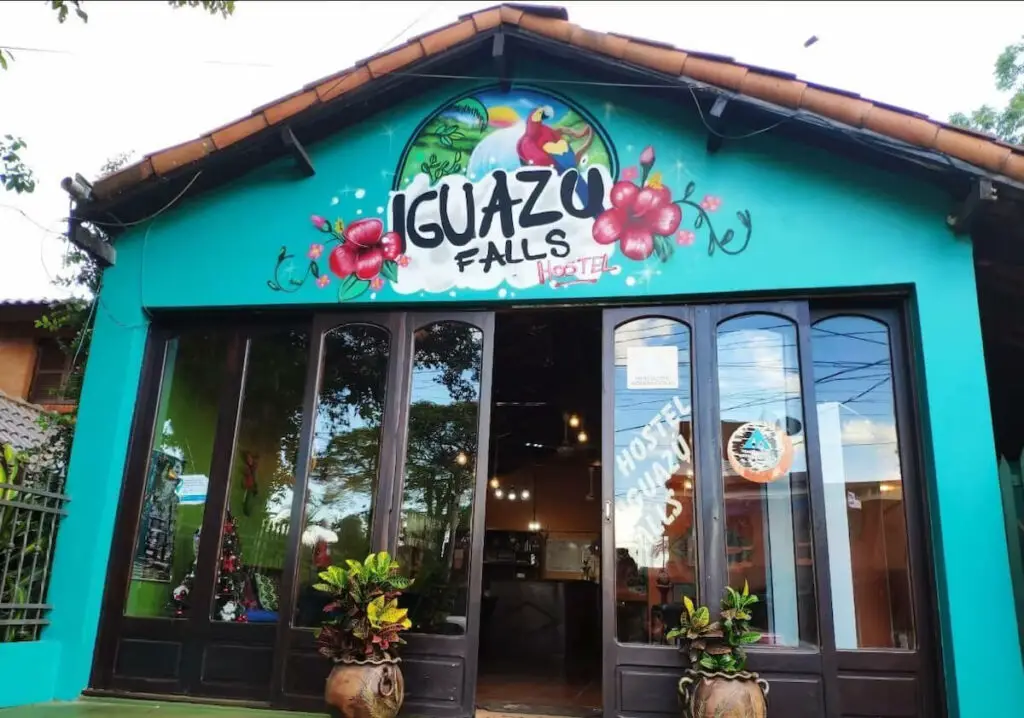
Budget: (⭐ 8.2) Simple but clean, Igauzu Falls Hostel gets great reviews from guests, and has a swimming pool.
Days 11-14: Salta and Jujuy
It’s now time to head on to the spectacular landscapes of the north of Argentina.
Yes, adding northern Argentina into your two week Argentina itinerary adds a lot more flying – but it’s truly spectacular and markedly different from the rest of the country. It’s one of my favourite places to visit in Argentina because of the otherworldly landscapes, delicious wines and intriguing culture. Whenever anyone asks me about visiting Argentina, the north is where I always encourage them to go.
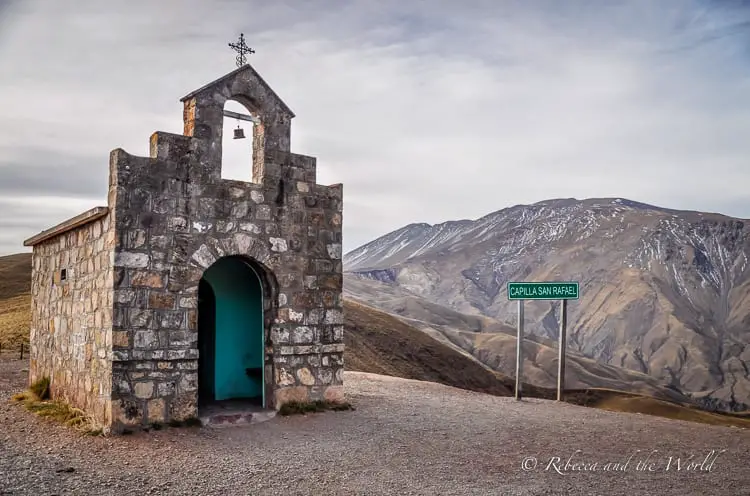
What to do in north Argentina
Fly into Salta to begin a north Argentina road trip through landscapes that you won’t soon forget.
From Puerto Iguazú, you can fly non-stop to Salta with Aerolíneas Argentinas on Tuesday, Wednesday, Thursday and Sunday (at the time of writing – I recommend checking yourself as well just in case it’s changed). Any other day and you will need to connect via Buenos Aires (one of the frustrating parts of travelling around Argentina).
In Salta, rent a car and spend the next few days exploring the dusty towns of Humahuaca, Tilcara and Purmamarca, and the wine region of Cafayate. If you want some tips, I have a guide to Argentina car rentals.
In Humahuaca, scour the markets for artisanal blankets and rugs, pottery and clothing for the perfect souvenirs.
Tilcara is home to the Pucará ruins, a pre-Incan fort.
Base yourself in Purmamarca to see the majesty of the Cerro de los Siete Colores (Hill of Seven Colours), layer upon layer of pastel-coloured rock that is best seen at sunset.
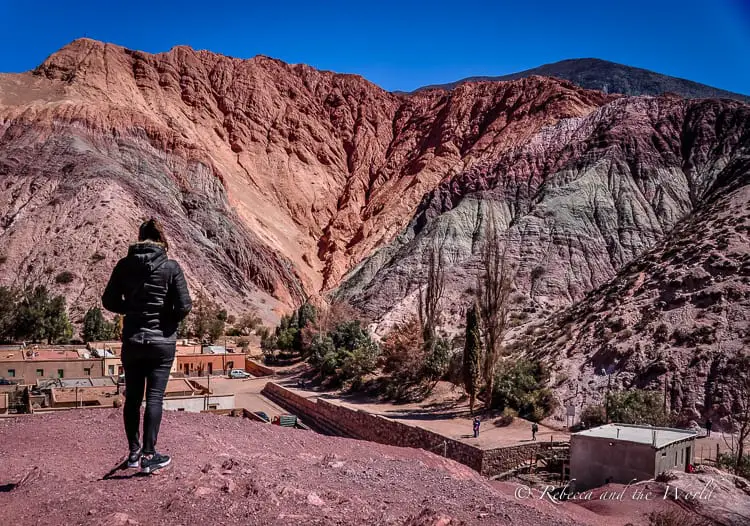
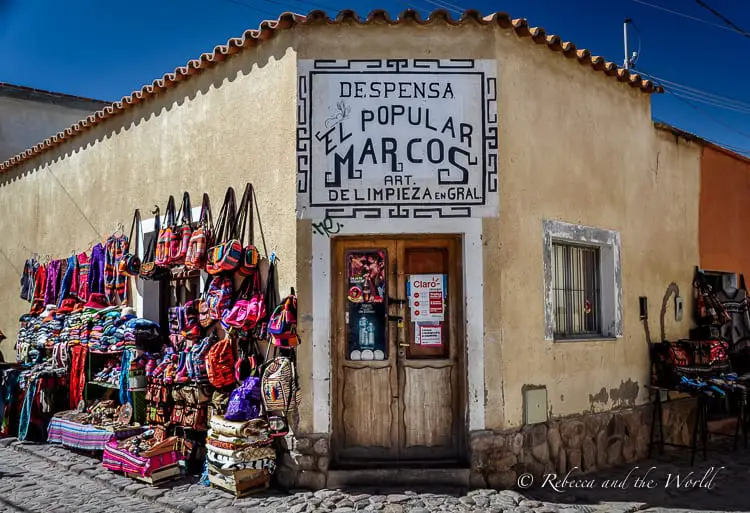
If you don’t want to hire a car, you can take day trips from Salta, or tour operators can arrange multi-day trips to the highlights, including to Salinas Grandes, the second largest salt flats in South America.
Next, head south to Cafayate, Argentina’s second wine region, where you can taste your way through several wineries. The Torrontés varietal is what’s famous here and it’s one of my favourite wines. So make sure you stop in at a few wineries. Here’s my guide to the Cafayate wine region.
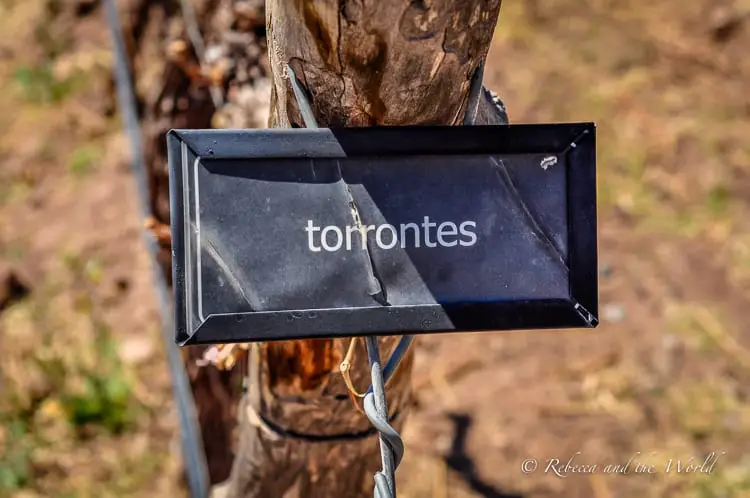
Before you fly out, spend a day in Salta, the attractive capital city of the province of the same name. Join a walking tour of the city or explore the Museo de Arqueología de Alta Montaña. Here you will see the mummified bodies of sacrificed Incan children. Only one child is displayed at a time, mesmerisingly frozen in time.
Where to stay in Salta
- Luxury: Hotel Legado Mítico is a delightful townhouse filled with leather armchairs, cowhide rugs and antiques. This cozy hotel epitomises stereotypical northwest Argentina, but in a sophisticated way. Check rates and make a booking at Booking.com
- Mid-range: Design Suites Salta (where we stayed) is a modern hotel with spacious bedrooms. It’s located within walking distance of the main area of the city. Book your stay at Design Suites Salta today on Booking.com
Where to stay in Purmamarca
- Luxury: Located at the foothills of the Cerro de los Siete Colores, El Manantial del Silencio is designed like an old estancia. Rooms are decked out with wrought-iron beds and terracotta tiled-floors. Check the latest rates on Booking.com
- Mid-range: The views of the surrounding mountains are the drawcard of Huaira Huasi, a collection of terracotta-coloured adobe buildings. Book your room online at Booking.com
- Budget: The rooms at La Valentina are small, but you won’t spend much time in there when you can be outside admiring the views of the Cierro de los Siete Colores from the patio. Check prices on Booking.com
If you prefer to stay in Humahuaca, find the best hotel with Booking.com. Alternatively, Tilcara has some good options on Booking.com.
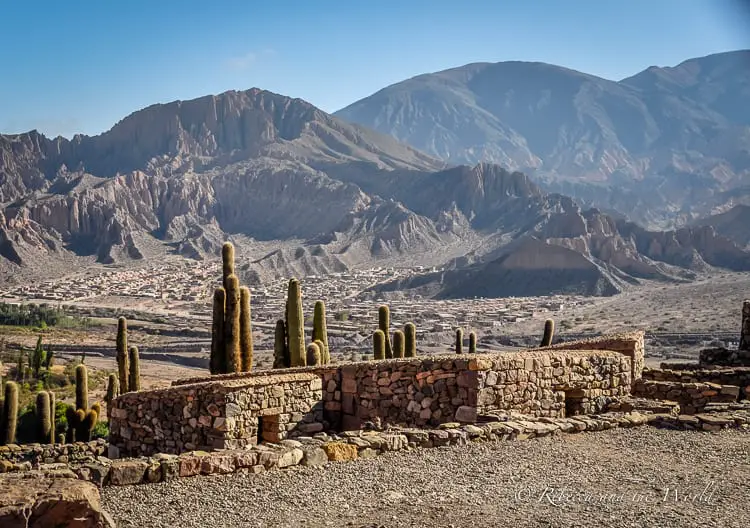
Where to stay in Cafayate
- Luxury: Just a few minutes outside the wine town of Cafayate, the rooms at Grace Cafayate have huge bathtubs and great views over the vineyards. Compare rates at Booking.com
- Moderate: Hotel Asturias is a country-style hotel with cute little balconies. Rooms are comfortable and it’s right in the heart of Cafayate. Book a room on Booking.com
- Budget: Book a room at Rusty-K Hostal and enjoy the large outdoor area that’s beautiful on a sunny day. Check the latest rates on Booking.com
From Salta, find a late departure back to Buenos Aires. I can guarantee that you will be gloomy when you board your final plane home – Argentina truly is a country of passion, different landscapes and culture that will capture your imagination.
Wondering how to plan a trip like this Argentina itinerary? Check out my 15 easy steps on how to plan a trip from start to finish!
More places to add to your Argentina itinerary
It was incredibly hard to narrow down this Argentina itinerary to just two weeks! There are so many parts of the country that I love.
If you’ve got a bit more time up your sleeve or you have other interests (maybe you want to spend more time hiking, maybe you want to go wine tasting, maybe you enjoy exploring cities) you can add on some extra regions to your Argentina travel itinerary.
Again, if you need help planning two weeks in Argentina, drop a comment below and I’ll help you out.
Mendoza
- Wine is Mendoza’s drawcard – you can easily spend a day (or two, or three!) tasting Malbecs at the many wineries throughout the three wine-producing regions.
- Pamper yourself in the thermal spas near Mendoza city.
- Discover Mendoza’s charm and its pretty plazas and leafy avenues.
- Get adventurous with whitewater rafting, horse riding or mountain biking.
Bariloche
- Bariloche is Argentina’s chocolate capital, so make sure you try a lot of it.
- Explore the Ruta de los Siete Lagos – a stunning drive through the area’s seven lakes. You can even bike the route, which is an adventurous addition to any Argentina itinerary 14 days!
- Discover the natural beauty of Arrayanes forest.
- Bike the Circuito Chico for beautiful views or simply drive the route on this tour.
Ushuaia
- Check out my guide to the best things to do in Ushuaia.
- Get up close to penguins at the end of the world.
- Ride the End of the World Train and hike in Tierra del Fuego National Park.
- Go hiking and canoeing in Tierra del Fuego National Park.
- Get out on the water and see seals and birdlife in the Beagle Channel.
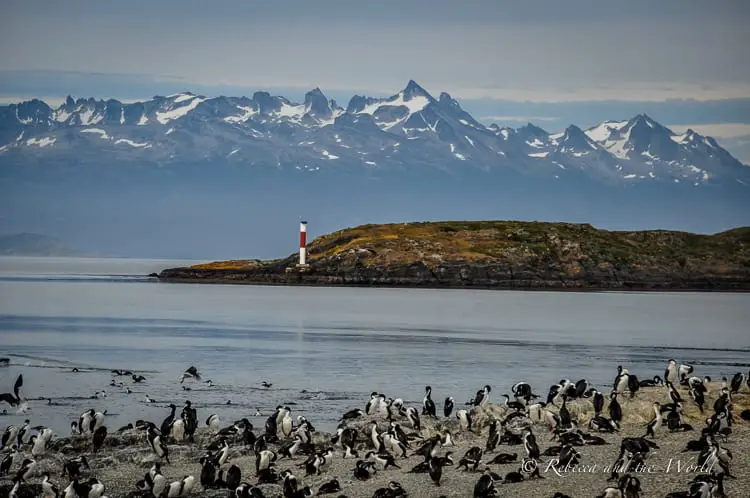
Península Valdés
- Go on a tour to see penguins in Peninsula Valdés.
- You can also see sea lions, elephant seals and whales in the area.
Córdoba
- If you visit around Oktoberfest, join in the celebrations in Villa General Belgrano.
- Explore the beautiful cabildo and cathedral in the city centre.
- Have a picnic in Sarmiento Park and watch local families spending time together on the weekend.
Esteros del Iberá
- Spend time exploring the Iberá wetlands and spot capybara, caiman, black howler monkeys, the maned wolf, deer and more than 300 bird species.
Argentina is an amazing country, and however you decide to spend your two weeks, you’ll go home with unforgettable memories!
Essential info to know for your Argentina trip
Visiting Argentina for the first time can be daunting. Where should you go? How long do you need? How do you get around the country? Where do you get money? What’s the blue market? Do I need travel insurance for Argentina?
I’ve written a whole guide to everything you need to know before you visit Argentina that covers these questions and more. Check out my Argentina travel tips and don’t hesitate to contact me if you have more questions!
Wrap up: Argentina 2 week itinerary
In just two weeks, Argentina’s astonishingly diverse landscape and rich culture will leave an indelible impression on you. You’ll marvel at the energy of Buenos Aires, feel the cool spray of Iguazú Falls, go ice trekking on Perito Moreno glacier and experience the wild, untouched beauty of the country’s northwest.
While you can’t pack everything in, you can still have an amazing time discovering the highlights of Argentina in two weeks with this itinerary.
Argentina 2 week itinerary: FAQs
What is the best time to visit Argentina for this 2-week itinerary?
Argentina is a HUGE country with diverse climatic regions so the best time to visit depends on your activities and destinations. However, spring (September to November) and autumn (March to May) generally offer the most pleasant weather across the country for this itinerary.
How many days in Argentina do I need?
A trip to Argentina can be as short or as long as you want it to be – it’s all about what you want to get out of your adventure! But I think 14 days is a good starting point. With that amount of time, you can cover the destinations I’ve mentioned in this itinerary. However, if you want to explore the country in more depth, consider extending your stay to three weeks or even a month.
Is Argentina safe for tourists?
Absolutely! Argentina is safe for tourists. Like any travel destination, it’s always important to stay alert and aware of your surroundings, especially in larger cities. Follow standard travel safety precautions and you should enjoy a trouble-free trip.
What type of power plug is used in Argentina? Do I need a converter?
Argentina uses type I plugs, which have two flat parallel pins and one grounding pin. If your devices use a different type of plug, you’ll need an adapter. Also, the standard voltage is 220 V, so check your devices to see if you’ll need a voltage converter.
How do I get around in Argentina? Is public transport reliable?
Argentina has a comprehensive public transportation system. In larger cities like Buenos Aires, the subway (Subte) and bus system are efficient. For longer distances, the country has an extensive network of long-distance buses and domestic flights. Renting a car is also an option for more flexibility.
Do I need to know Spanish to travel around Argentina?
While it’s not a necessity, knowing basic Spanish phrases can enhance your travel experience in Argentina. Many Argentinians speak English, especially in tourist areas, but locals always appreciate it when you try to speak their language.
Did you find this article helpful? Consider buying me a coffee as a way to say thanks!
What would you include on your 2 weeks in Argentina itinerary? Or need help planning your own Argentina trip? Leave your tips and questions in the comments below!
Related posts
Before you go… these posts might be of interest:
- 45+ of the Best Things To Do in Argentina
- 15 Incredible Places to Visit in Argentina
- 8 of the Most Romantic Destinations to Honeymoon in Argentina
ARGENTINA TRIP ESSENTIALS
- Book your flight to Argentina online with Skyscanner. I like how this site allows you to find the cheapest days.
- Find a great hotel in Argentina. Check prices on Booking.com and Expedia online.
- Check out the huge range of day tours throughout Argentina on GetYourGuide or Viator. There’s something for everyone.
- Keep those bottles of wine you’ll be buying safe in these wine bags.
- A copy of the Lonely Planet guide to Argentina will be handy. Also pick up a Spanish language guidebook to help you navigate your visit.
- One thing I always purchase is travel insurance! Travel Insurance Master allows you to compare across multiple policy providers, while SafetyWing is great for long-term travellers and digital nomads.
PIN IT FOR LATER:
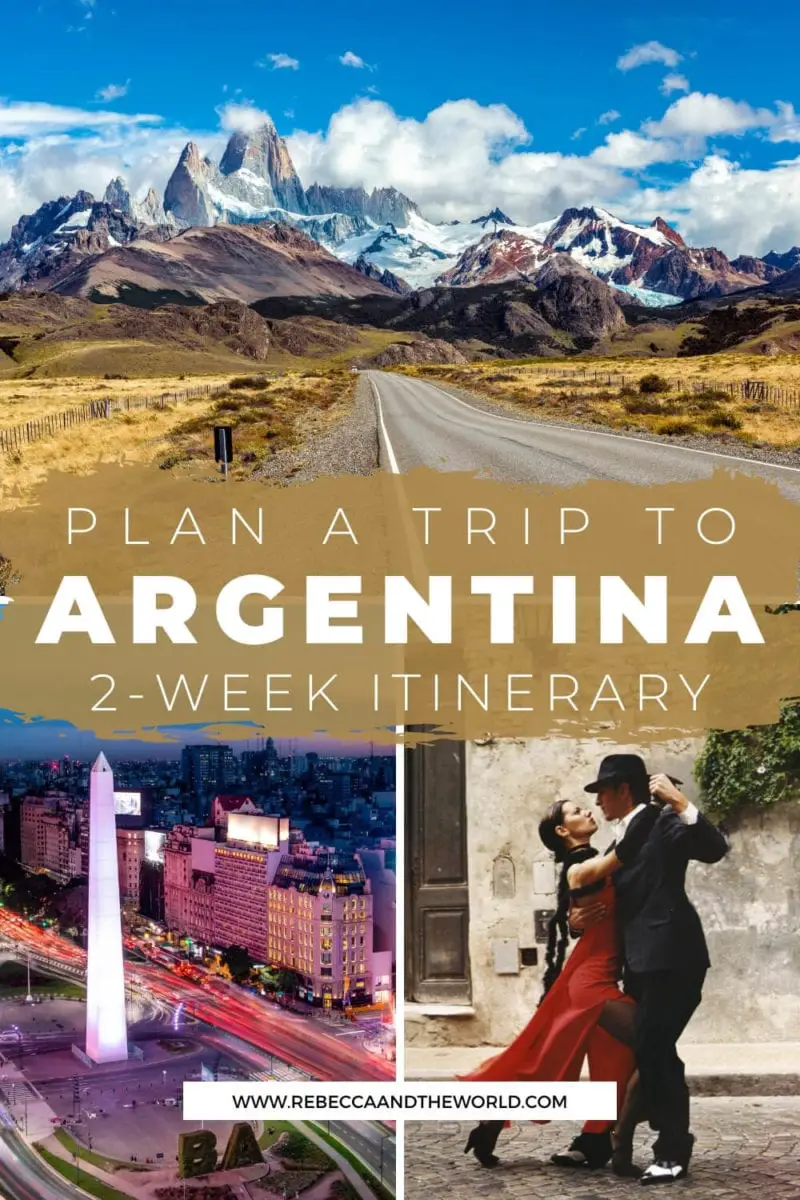
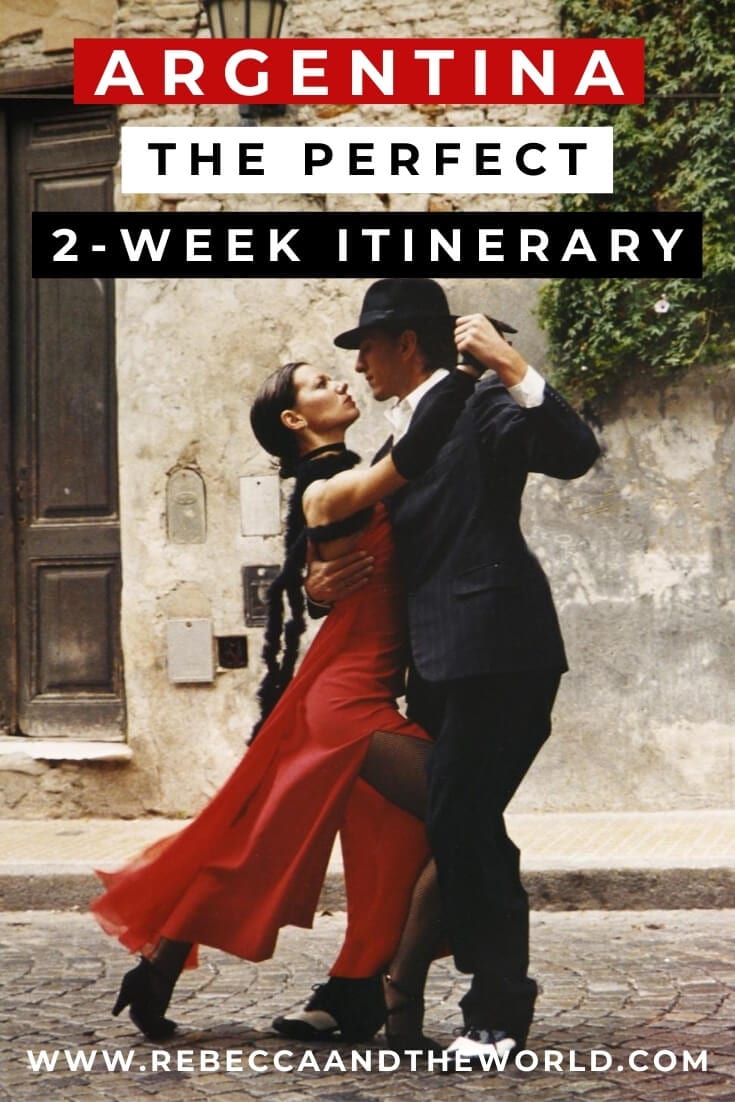
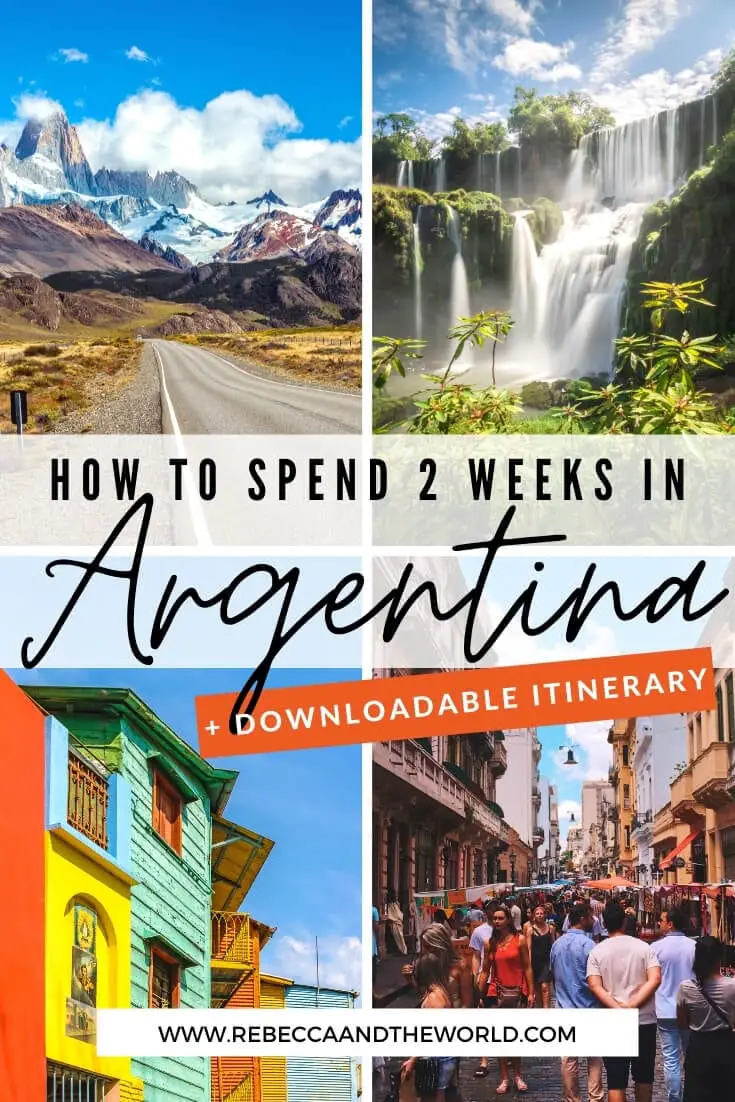

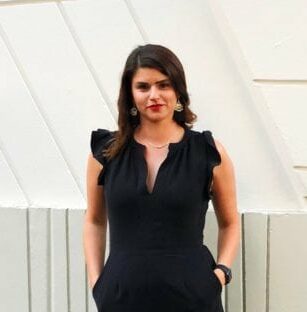

Great post! I’m planning a trip to Argentina in the next few months and this itinerary is very helpful. I love how you included both popular and off-the-beaten-path destinations. I’m especially excited to visit Iguazu Falls and the Perito Moreno Glacier. Thanks for sharing!
Thank you – have a great trip!!
We loved your itinerary ideas! We are thinking of a 11 days trip to Argentina and would like to stay 3 days in BAS, go south to el calafate for another 3 days and then Bariloche for 2-3 days. Is this a recommended itinerary? Or would you recommend *either* El calafate or Bariloche as they are very similar? If one is better than the other one we can choose something different for our 3rd destination (maybe Mendoza or salga). We are foodies, outdoor enthusiastics and love the city vibes too!
Hi Adri! I think El Calafate and Bariloche are suitably different that you could easily do both. El Calafate is amazing for the glacier, while Bariloche has beautiful drives/hikes and a small Swiss chalet town vibe.
Hi Rebecca,
Me and my fiancé are getting married in September and for our honeymoon Argentina is in the lookout. We would love to have a romantic trip around Argentina. We would love to ge to know Argentina and our trip we would like something that also includes good food ( we are foodies and love to eat ), wine tasting ( I would love to go to vineyards and have wine tasting paired with food), beautiful landscapes( We are not very outdoorsy people but we love the amazing views, the sceneries,) and some relaxing time as well( we want to get to know as much as posible from Argentina but not something that feels very fast paced that we don’t get to relax, we love sleeping in).
From your blog I already have some idea of what we would like to do. But if you any suggestion we would really appreciated. Hope to hear back from you!
Congrats Stefanie! Argentina is an excellent choice for a honeymoon destination 🙂 I have a blog post on my website specifically about great places to honeymoon in Argentina, it may be helpful: https://www.rebeccaandtheworld.com/honeymoon-argentina/
All the best for the big day!
Hi Rebecca,
Enjoyed your post abt Argentina. My husband has always wanted a straw fedora hat similar to a Panama hat. Is it common to a find these hats in Argentina? Where is the best places to buy a good one?
Hmmm, good question! I don’t think so – I mean, you’d definitely find a hat like that, but they aren’t a specialty of Argentina.